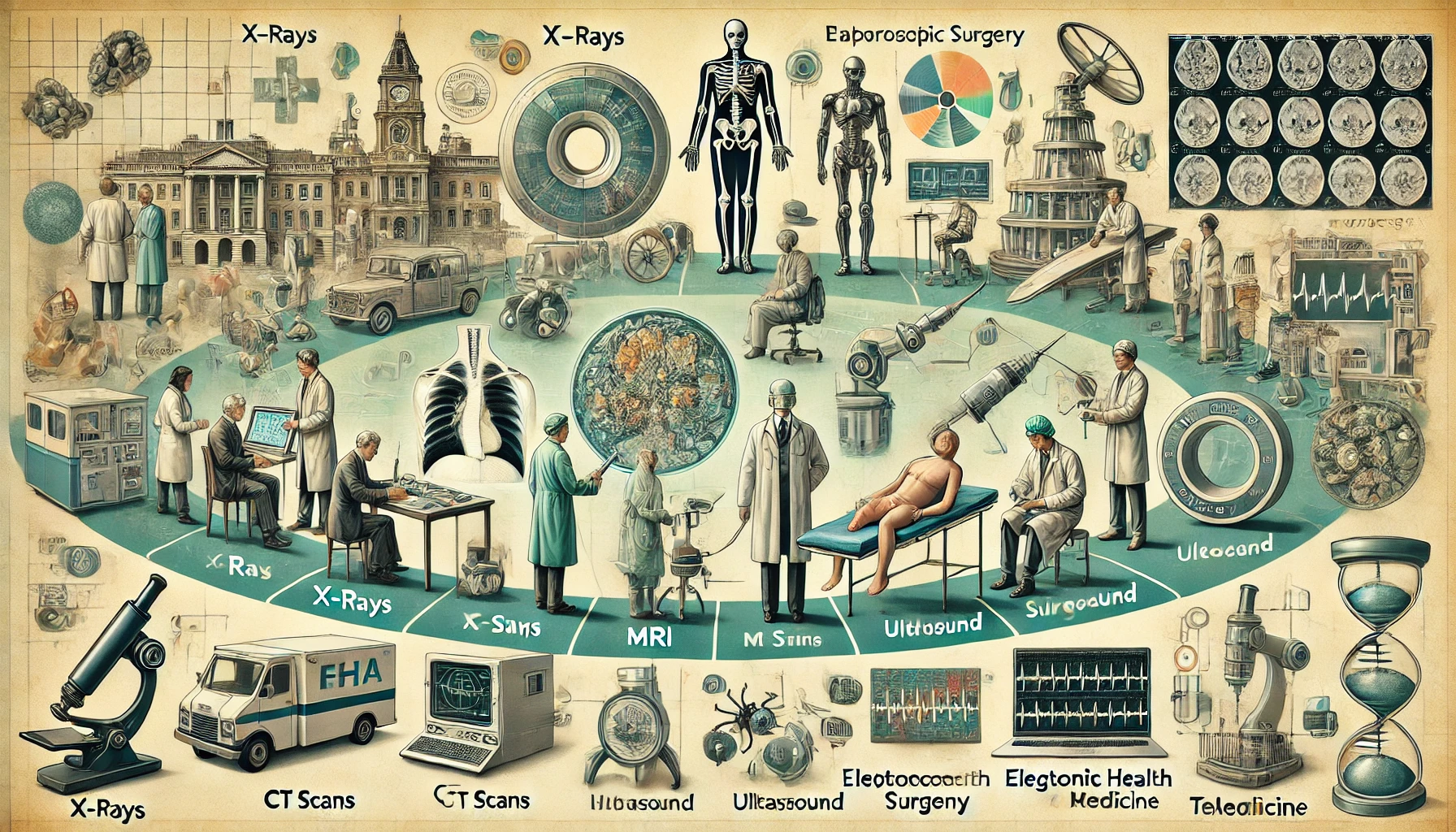Transformative Progress in Medical Technology
The sphere of medical technology has experienced remarkable shifts within the last hundred years, catalyzing a new era in healthcare and substantially elevating the quality of patient care. From the pivotal revelation of X-ray technology to the advent of treatment tailored to individual needs, these developments have fundamentally altered the approach to medical diagnostics, therapeutic interventions, and patient management. This exposition delves into the progression of medical technology, underscoring seminal breakthroughs and their significant influence on contemporary healthcare practices.
The Inception: Wilhelm Conrad Roentgen’s X-Ray Discovery
In 1895, an epochal event occurred when Wilhelm Conrad Roentgen unveiled the phenomenon of X-rays. This momentous breakthrough provided a non-destructive means to peer inside the human body, revolutionizing the way medical conditions are diagnosed.
X-Ray Technology: A Diagnostic Mainstay
X-rays swiftly became an indispensable tool in medical imaging, permitting physicians to detect broken bones, infections, and growths with exceptional precision. The advent of X-ray technology spurred further innovations in the realm of medical imaging.
The Advancement of Medical Imaging Techniques
Subsequent to the X-ray’s inception, medical imaging technologies continued to advance, presenting novel methodologies that augmented diagnostic proficiency and patient care.
- Computed Tomography (CT) Scans
- Introduction: In the 1970s, CT scans emerged, amalgamating multiple X-ray perspectives to yield cross-sectional bodily images, offering three-dimensional insights.
- Applications: CT scans are instrumental in identifying conditions such as cancers, heart diseases, and injuries, and play a vital role in surgical planning and execution.
- Magnetic Resonance Imaging (MRI)
- Development: The 1980s saw the emergence of MRI, utilizing potent magnetic fields and radio waves to produce detailed soft tissue images, without the ionizing radiation found in X-rays and CT scans.
- Advantages: With its enhanced contrast resolution, MRI is invaluable for imaging the brain, spinal column, and joints, and is extensively employed in various medical specializations, including neurology and orthopedics.
- Ultrasound Imaging
- Principle: Utilizing high-frequency sound waves, ultrasound imaging facilitates real-time observation of bodily organs and structures, offering a safe, non-invasive diagnostic approach.
- Common Uses: Ultrasound finds widespread use in monitoring prenatal development, cardiac evaluations, abdominal scans, and assisting in needle biopsies.
Innovations in Surgical Approaches
Medical technology has not only transformed diagnostic techniques but has also radically improved surgical methodologies, yielding safer, less invasive, and more accurate procedures.
- Laparoscopic Surgery
- Minimally Invasive: Known for its reduced incision size, laparoscopic surgery employs cameras to guide operations, minimizing recovery durations and postoperative discomfort.
- Applications: This technique is applied in various surgeries, including those involving the gallbladder, hernias, and weight-loss interventions.
- Robotic Surgery
- Precision and Control: Robotic systems, like the da Vinci Surgical System, amplify a surgeon’s precision. They convert hand movements into finer, more controlled instrument actions.
- Benefits: Robotic surgery offers enhanced maneuverability, superior visualization, and a decreased likelihood of complications, finding applications across multiple surgical fields.
The Emergence of Digital Health
The incorporation of digital innovations into healthcare has markedly improved the accessibility, efficiency, and personalization of patient care.
- Electronic Health Records (EHRs)
- Digitization of Records: Transitioning from paper, EHRs provide a comprehensive digital compilation of patient histories, augmenting the precision and coordination of care.
- Benefits: EHRs enable immediate data access, streamline clinical operations, and bolster communication among healthcare professionals, while supporting data analytics to enhance patient outcomes and service delivery.
- Telemedicine
- Remote Healthcare: Telemedicine employs digital communication tools to offer healthcare remotely, enabling patient-provider consultations through various electronic mediums.
- Advantages: Telemedicine extends care access, particularly to distant or underserved populations, and offers convenience while reducing the necessity for physical appointments, a particularly vital aspect during health crises like the COVID-19 pandemic.
The Dawn of Personalized Medicine
Personalized medicine signifies a transformative shift in healthcare, concentrating on bespoke treatments crafted from an individual’s genetic, environmental, and lifestyle data.
- Genomic Medicine
- Genetic Sequencing: Modern genomic sequencing enables the analysis of an individual’s genetic blueprint, pinpointing mutations and susceptibilities to specific conditions.
- Applications: Genomic insights are pivotal in oncology for identifying cancer-driving mutations for targeted treatments, diagnosing rare genetic conditions, and customizing therapies for diseases like cystic fibrosis and heart conditions.
- Pharmacogenomics
- Customized Drug Therapy: Pharmacogenomics investigates how genetic variations influence medication responses, informing tailored drug regimens to maximize effectiveness while minimizing side effects.
- Benefits: Personalized medication strategies enhance patient care and curtail the guesswork in prescribing, leading to safer and more potent treatments.
- Precision Medicine Initiatives
- Data Integration: Precision medicine programs merge genetic, clinical, and lifestyle information to formulate individualized treatment strategies, utilizing big data, artificial intelligence, and machine learning to identify patterns and forecast treatment outcomes.
- Initiative: The NIH’s All of Us Research Program is on a mission to gather comprehensive data from a diverse pool of one million individuals. The objective is to propel research forward and enhance health outcomes by harnessing the potential of precision medicine.
The evolution of medical technology is a clear reflection of our inventive spirit and the unwavering drive to enhance healthcare services. From the pivotal discovery of X-rays to the cutting-edge era of personalized medicine, each breakthrough has edged us closer to the ideal of superior patient treatment. Looking ahead, we anticipate that ongoing innovations in the realm of medical technology will revolutionize healthcare, making it more accurate, effective, and customized to the unique requirements of each patient. The odyssey of medical technology continues, with future advancements poised to deliver marvels that, at present, are beyond our wildest dreams.
